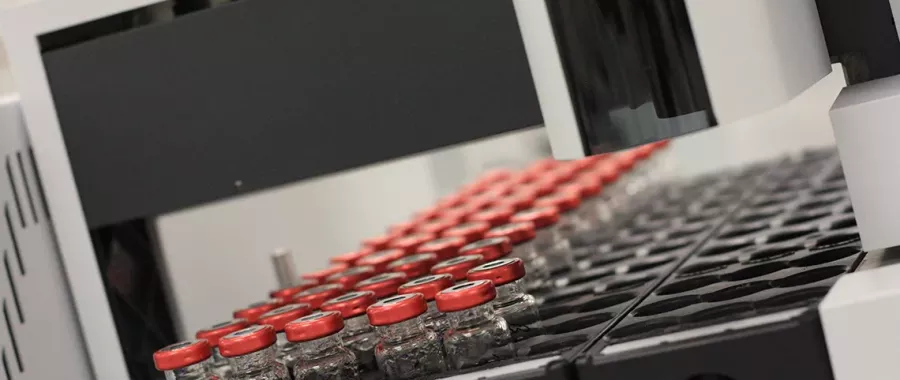It’s amazing what can be found on the UK’s railways and when there are issues, they are not always easy to identify. Paul Walker, senior development specialist, takes us behind the scenes of the advanced chemistry & research laboratory, to discover the secret behind the characterisation of unknown materials.

Our chemical analysis laboratory recently received an engine turbo air filter which had become mysteriously blocked by an unknown deposit. The premature blocking of the filter had led to damage of the engine turbo on class 172 vehicles due to reduced air flow through the turbo, which in turn, resulted in a loss of power to the engine.
Our inquisitive advanced chemistry & research team set to work using the following steps to uncover the mystery.
First impressions count: visual examination
Our senior chemical analysis team has a vast amount of experience in the characterisation of unknown materials so, more often than not, they can usually make an educated guess by examining the substance by look, feel and smell. At the very least, this examination allows us to decide on the most suitable suite of tests to be carried out and take photographs to record the appearance of the sample in the client report.
It was clear from visual examination that the deposit had hardened itself to the outside of the filter and included debris such as bird feathers and leaves. When touched, the substance left a sparkling residue on our gloves indicating the presence of a fine metallic powder.
Taking a closer look: optical microscopy
The next step was to carry out optical microscopy in order to take a closer look into the debris. Under the microscope, along with the leaves, feathers and metallic dust we found a matting of fine fibres along with seed pods.
On the right wavelength: Fourier Transform Infrared Spectroscopy (FTIR)
We then moved on to analyse the sample by Fourier Transform Infrared Spectroscopy (FTIR) in order to identify the presence of materials such as polymers, adhesives, fabrics or inorganic salts. The FTIR produces an infrared spectrum by measuring how well the material absorbs the infrared beam of light at different wavelengths. This analysis identified the matted material as being a collection of cellulose fibres.
Establishing the pattern: Gas Chromatography Mass Spectrometry (GC/MS)
To check for the presence of trace organics we used Gas Chromatography Mass Spectrometry (GC/MS). This is a technique that will separate out the organic species and detect the fragments from the ionization of the molecules. These fragments form a unique pattern which is used to identify the organic compound.
We extracted a portion of the debris in dichloromethane and analysed it by GC/MS. No evidence of any oils or fuels was detected. When the debris was in the solvent, the fine metallic particles sank to the bottom and were able to be isolated for further examination.
Elemental my dear Watson: Scanning Electron Microscopy (SEM) Analysis
Scanning Electron Microscopy using Energy Dispersive X-ray analysis (SEM-EDX) analysis determines the elemental composition of the unknown material. An X-ray beam is fired onto the surface of the material which excites the atoms. This change in energy state produces X-rays which are measured by the spectrometer, allowing us to identify the elements present.
After analysis, the fine metallic powder recovered from the filter was found to be iron, along with smaller amounts of silicon.
Case closed: technical report
Following the completion of an unknown material analysis, the allocated senior scientist provides a full technical report on their findings. Each characterisation is treated uniquely, as one set of analysis is not always applicable to every type of sample.
In this case, we found that the debris present on the exterior of the air filter was fibrous and made up of a combination of natural airborne materials such as cellulose (from plants), feathers, seeds and leaves. Adhered to this was a brown/black coloured iron powder, probably originating from wheel, rail or brake wear debris. The silicon we found could have originated from ballast dust and general siliceous material from the environment. The build-up of this material would certainly have led to a reduction in air flow through the filter, in turn reducing the power of the turbo.
The solution? Our client was advised to look at redesigning the filter housing in order to reduce exposure to the contamination or to implement a change in frequency of the filter replacement.
Want to find out more about how SOCOTEC identifies unknown materials?

You might also like







Add new comment